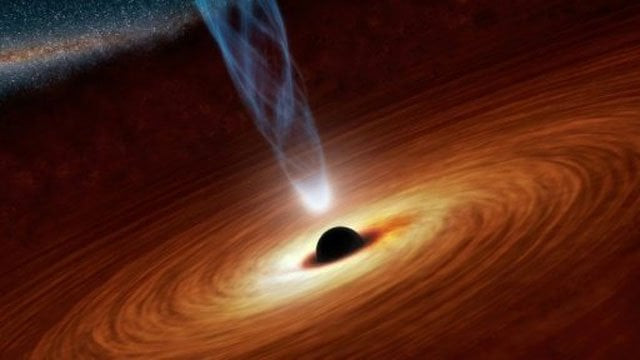Desert scope stakes out supermassive black hole
Dubbed S2, the star lies about 25,000 light years from our Solar System

Telescopes have never seen a black hole, and the world's brightest minds are unable to reconcile their core characteristics with some of the bedrock laws of nature
PHOTO: AFP
This means they will be able to observe the star's movements in more detail than ever before, in an important test for Albert Einstein's theory of general relativity.
Dubbed S2, the star lies about 25,000 light years from our Solar System.
It is the celestial body known to make the closest approach to our galaxy's central black hole, named Sagittarius A, on a 16-year elliptical orbit.
S2 is a relative youngster in astronomical terms -- no more than 100 million years old.
Einstein's theory of relativity faces satellite test
It has been studied before, but in much less detail than can now be observed by the European Southern Observatory's Gravity instrument in Chile's Atacama desert.
"The Gravity observations will be about 15 times more accurate," said project leader Frank Eisenhauer of the Max Planck Institute for Extraterrestrial Physics in Germany, and recalled "a lot of high fives" when S2 came into focus.
Gravity combines the light from Europe's four largest telescopes to create a combined 130-metre (427-foot) diameter lense with "much sharper" imaging.
It will seek out miniscule but telltale deviations in the movement of gas and stars swirling around Sagittarius A -- ultimately proving its existence.
Sagittarius A is thought to be four million times more massive than our Sun.
Pakistan-born scientist played part in discovery of gravitational waves
Black holes are regions in space-time where mass is collapsed into such a small area that gravity takes over completely, and nothing, not even light, can escape -- making them invisible.
Their existence is inferred from the behaviour of objects nearby, including stars swirling around them as planets orbit our Sun.
Black holes were theorised in Einstein's gravity theory, which was published in 1915 and still forms a bedrock of modern physics.
It has withstood every single experimental test to date, but the theory fails to explain some of the forces in the Universe -- particularly those at the subatomic, quantum level.
If Einstein was right, the Gravity team would expect to see minute changes in S2's orbit in the extreme gravity environment nearest Sagittarius A.
And they managed to set up their instrument just in time.
In 2018, S2 will make its closest approach to the black hole on its egg-shaped orbit -- "just" 17 light hours or 18 billion kilometres (11 billion miles) away.
It will travel at nearly 30 million kilometres per hour or 2.5 percent of the speed of light, just out of reach of the black hole's all-devouring reach.
Scientists glimpse Einstein's gravitational waves
"The trick is to measure its (S2's) orbit in the year before and the year after its closest approach, because the effects of general relativity strongly increase when you approach the black hole," Eisenhauer told AFP.
It would resemble an "extra kick" as the star shaves past, "and it's this 'kick to the orbit' we want to see," he said.
The next time S2 will be this near will be in 16 years.



















COMMENTS
Comments are moderated and generally will be posted if they are on-topic and not abusive.
For more information, please see our Comments FAQ